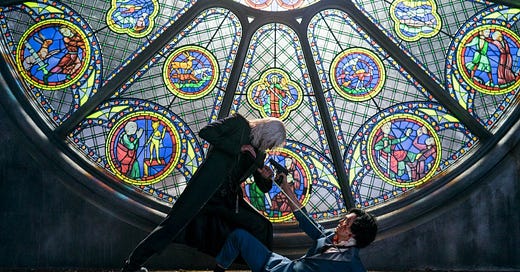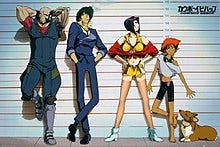🚨NERD ALERT!🚨
The original classic anime series “Cowboy Bebop,” premiered in 1998 and came to fame in America via “Adult Swim” in 2001, every Saturday night at midnight. It quickly gained a reputation as one of the greatest works in animation that has ever graced the television screen. Now, Netflix audaciously thinks it can do better, releasing a live-action adaptation last month. Sadly, Netflix’s cowboy is an obese and crude bore, unable or unwilling to comprehend why the original worked.
The original “Cowboy Bebop” began as a collaborative project between the legendary Hajime Yatate group inside Sunrise Studios, to create a Japanese animated mishmash of science fiction, western, and film noir. The story follows the adventures of a trio of galactic bounty hunters, led by the charismatic former-gangster-turned-kung-fu-detective Spike Siegel.
One only needs to listen to the fantastic opening intro, “Tank!” which composer Yoko Kanno said she wrote “to make music which would light a fire in me,” to know that Bebop is offering you one heck of a good time.
If you know anything about me, you know that I am through and through a giant otaku and a weeb of epic proportions.
Some of my best memories are hanging out with my aunt and uncles watching 90’s VHS episodes of Dragon Ball, Rurouni Kenshin, and Sailor Moon. Before internet streaming, getting ahold of quality Japanese television meant buying or renting VHS and then DVDs of whatever show you could find at Blockbuster or Sunrise. So my family caretakers would rent some episodes of whatever looked interesting on the shelf, not totally sure they’d be wandering into an epic or cornhole.
No doubt, I loved watching those shows with my family, but I didn’t have my internal anime passion until I found a little ol show called Cowboy Bebop.
As I wrote for the Federalist, reviewing the Netflix live-action remake of that Shinichirō Watanabe classic, Bebop became the spark that ignited my fandom and taught me that Anime and nerdery could be raised to the level of a profound art form.
For so many, “Cowboy Bebop” was the gateway drug to anime and Japanese pop culture. I first encountered “Bebop” as a teenager watching a late-night episode on Cartoon Network’s “Toonami” in the early 2000s, “Waltz for Venus.” It was a favorite story starring spaceships, kung-fu, epic gun battles, and a brother stuck in a gang trying to earn money to cure his sister’s illness.
This story stuck with me long after watching. At the time, I was dealing with family drama, my parent’s court fights, the divorce, and the responsibility of taking care of my siblings that laid heavily on my shoulders.
Watching “Bebop” was profound. The haunting music, the touching imagery, and the intense action created an experience that, to this day, is indelibly carved into my heart anytime I hear “Tank!” Spike’s advice to his trainee Roco when fighting is to be flexible and quick at the moment, “to be like water.” It sounds silly to share, but that quote meant a lot to me and still does.
For millions of fans the world over, “Bebop” is an exceptional series. You can never go to a convention and not see dozens of people dressed as Spike, Jet, or Faye. And just like “Star Wars,” many creatives working in film, TV, animation, and video games today do so because of Watanabe’s masterpiece.
For me, like millions of Bebop fans across the world, this is an exceptional series near and dear to our hearts; to adapt this project successfully would be, for us, a monumental accomplishment. This is why what came out from the Netflix Cowboy Bebop project is so disappointing.
If you’d like to read more, please head over to my article at the Federalist, and check out for yourself why this attempt is worth putting in the annals of all-time bad ideas.
Thank you to Bleeding Fool for covering the story on their site.







